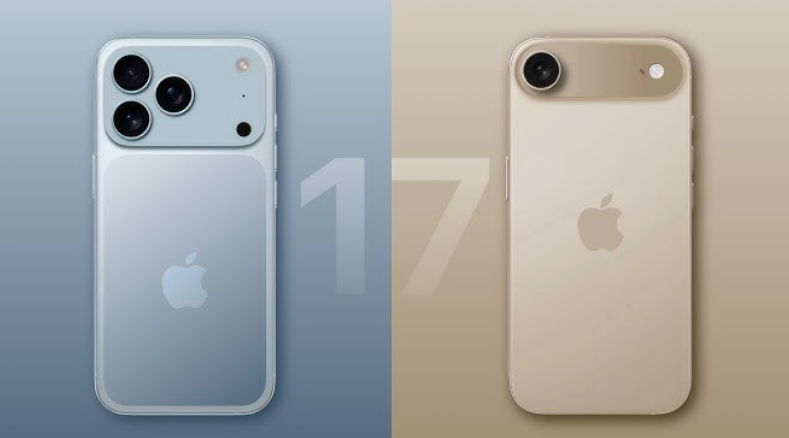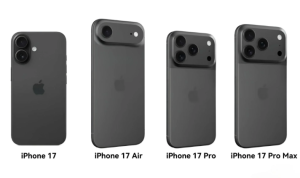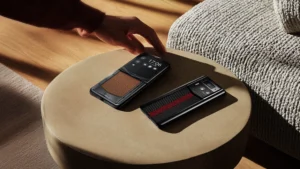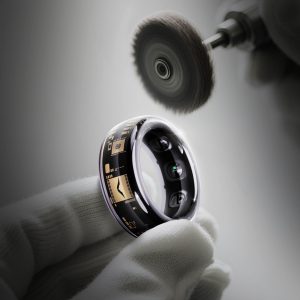Key Takeaways
- The iPhone 17's shift from a titanium frame back to a specialized aluminum alloy is a strategic design choice, prioritizing better heat dissipation and a lighter feel over the premium durability of titanium.
- This change addresses a key pain point from the previous generation: overheating under heavy load. The new aluminum frame, combined with an enhanced internal cooling system, significantly improves thermal performance.
- The new aluminum design also allows for a wider range of vibrant color finishes that are more resistant to fingerprints and scratches compared to the brushed titanium of the past.
Selection Criteria: Why Apple Made the Switch
Apple's decision to move from titanium to aluminum for the iPhone 17's frame wasn't about cost-cutting; it was a deliberate strategic move based on three key factors:
- Thermal Performance: The primary reason for the switch is to improve heat dissipation. While titanium is incredibly strong and light, it is a poor conductor of heat. The new aerospace-grade aluminum alloy used in the iPhone 17 transfers heat away from the A18 Pro chip more effectively, ensuring sustained performance during demanding tasks like gaming or 4K video recording.
- Weight Reduction: Despite being known for its light weight, the previous titanium frame was still heavier than the new specialized aluminum. The iPhone 17's aluminum frame contributes to a noticeably lighter overall device, making it more comfortable to hold for extended periods. This is a crucial design improvement for users who spend all day on their phones.
- Manufacturing and Aesthetics: The new aluminum material is easier to machine and polish, allowing Apple to introduce a new palette of vibrant, colorful finishes. The anodized aluminum is more resistant to smudges and fingerprints than the brushed titanium, which was often criticized for its susceptibility to marks.
In-Depth Analysis of the Design Shift
1. Solving the Overheating Problem: The Core of the New Design
The move from titanium to aluminum is first and foremost a solution to the overheating issues that plagued some users of the iPhone 16 Pro during intensive use. Titanium, with its low thermal conductivity, trapped heat within the device, leading to thermal throttling and a noticeable drop in performance. The specialized aluminum alloy used in the iPhone 17 acts like a natural heatsink, pulling heat away from the internal components and dissipating it through the frame.
- Use Case: Imagine a mobile gamer playing a high-graphics game like Genshin Impact for an hour. With the new aluminum frame, the iPhone 17 will maintain a higher and more consistent frame rate, preventing the stuttering and lag that was common with previous models.
2. Lighter and More Comfortable: A User-Centric Improvement
The slight but significant weight reduction of the iPhone 17 is a welcome change for a wide range of users. The aluminum frame feels more balanced in the hand, reducing fatigue during long sessions of social media browsing or video calls. This improvement, while seemingly minor, enhances the overall user experience.
- Best for: Digital artists using their iPhone for drawing or fitness enthusiasts who carry their phone on a run. The lighter weight makes a real difference in these hands-on, active scenarios.
3. Aesthetics and Durability: A Different Kind of Premium
While titanium is often seen as the more “premium” material due to its strength and aerospace association, the new aluminum design offers a different kind of premium feel. The smooth, anodized finish is more durable against minor scratches and better at hiding fingerprints. This shift in aesthetic philosophy from a rugged, industrial look to a sleek, polished one marks a new direction for Apple's design language.
- Recommended for: Fashion-conscious individuals and students who want a phone that not only performs well but also comes in a stylish, vibrant color. The new finishes are designed to stand out.
Comparison Table: Aluminum vs. Titanium
| Feature | New Aluminum Alloy (iPhone 17) | Titanium (Previous Generation Pro) |
| Thermal Performance | Excellent (High thermal conductivity) | Fair (Low thermal conductivity) |
| Weight | Lighter | Heavier |
| Durability | Good (More resistant to scratches/smudges) | Excellent (Stronger, but prone to fingerprints) |
| Aesthetics | Polished, vibrant colors | Brushed, industrial look |
| Manufacturing | Easier to machine and finish | More difficult and costly |
FAQ: Your Top Questions Answered
- Q: Is the new iPhone 17 less durable because it’s not titanium?
- A: No. While titanium is technically a stronger material, the aerospace-grade aluminum alloy used in the iPhone 17 is still incredibly durable. The phone's design, including a new strengthened glass, ensures it can withstand everyday drops and bumps just as well as, if not better than, its predecessor.
- Q: Will the new design help with battery life?
- A: Indirectly, yes. By improving thermal efficiency, the new aluminum frame allows the A18 Pro chip to run more efficiently without throttling, which in turn can lead to better overall power management and longer-lasting battery life during heavy use.
- Q: Are there any other design changes besides the material?
- A: Yes. The new aluminum frame also features a slightly more rounded edge for a more comfortable grip, and the camera bump has been subtly redesigned to be less prominent.








